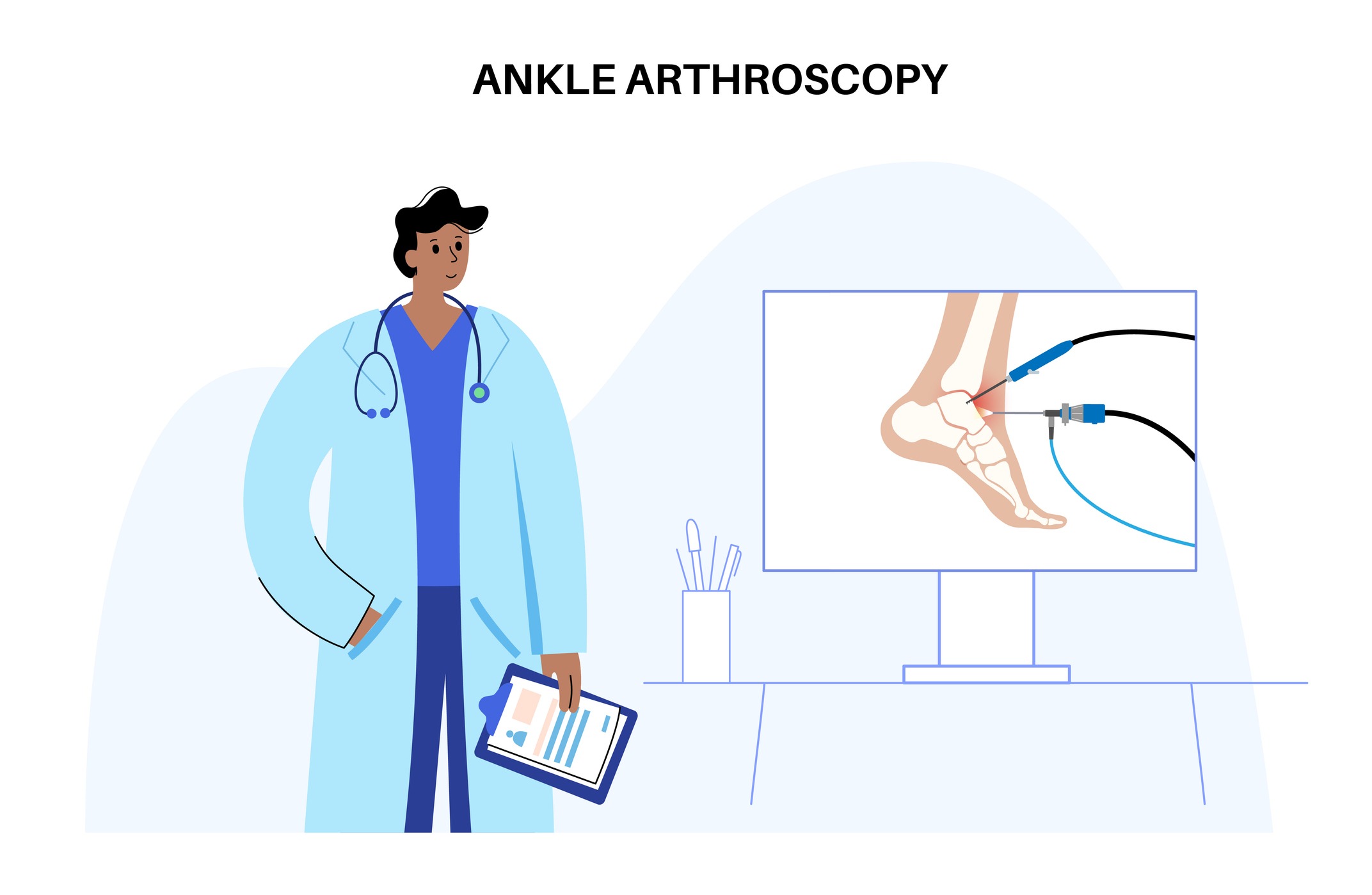What is Ankle Arthroscopy?
Ankle Arthroscopy is a minimally invasive surgical procedure used to diagnose and treat conditions affecting the ankle joint. Utilizing a small camera called an arthroscope and specialized surgical instruments, the surgeon can visualize, diagnose, and address problems within the joint through tiny incisions. This technique allows for precise treatment with minimal tissue disruption, leading to faster recovery times and reduced postoperative pain.

Why Might You Need Ankle Arthroscopy?
Ankle Arthroscopy may be recommended if you experience:
- Joint Pain: Chronic or acute pain in the ankle joint that affects daily activities.
- Stiffness: Reduced range of motion or stiffness in the ankle.
- Swelling: Persistent swelling in the ankle joint.
- Injury: Damage to the ankle joint from trauma or sports injuries.
- Degenerative Conditions: Conditions such as arthritis or other degenerative joint diseases.
- Diagnostic Needs: Need for an accurate diagnosis of ankle joint issues when other methods are inconclusive.
What Are the Steps in a Ankle Arthroscopy Procedure?
Preoperative Preparation
- Medical Evaluation: Comprehensive review of your medical history, symptoms, and previous treatments.
- Physical Examination: Assessment of ankle joint function, range of motion, and areas of pain or restriction.
- Diagnostic Imaging: X-rays, MRI, or CT scans to evaluate the condition of the ankle joint and plan the surgery.
- Informed Consent: Detailed discussion of the procedure, potential benefits, and risks.
During the Procedure
- Patient Positioning: You will be comfortably positioned to allow easy access to the affected ankle.
- Anesthesia: Local, regional, or general anesthesia is administered to ensure you are comfortable during the procedure.
- Incisions: Small incisions are made near the affected joint.
- Arthroscope Insertion: The arthroscope is inserted through one of the incisions, providing a clear view of the joint on a monitor.
- Treatment: Specialized instruments are used to repair or remove damaged tissue, smooth joint surfaces, or address other issues within the joint.
- Closure: The incisions are closed with sutures or adhesive strips, and a sterile dressing is applied.
Postoperative Care
- Observation: Monitoring in the recovery area to ensure no immediate complications arise.
- Pain Management: Medications and techniques for managing postoperative pain and swelling.
- Immobilization: Splinting or bracing to protect the ankle and support healing.
- Activity Guidelines: Instructions on caring for the surgical site and guidelines for gradually resuming normal activities.
Recovery and Rehabilitation
Postoperative Care
- Follow-Up Appointments: Scheduled visits to monitor healing and remove sutures if necessary.
- Pain Monitoring: Keeping track of pain levels and any changes in symptoms to guide further treatment.
- Physical Therapy: Rehabilitation exercises to restore strength, flexibility, and range of motion in the ankle.
- Gradual Return to Activities: Progressive return to daily activities and sports as guided by your healthcare provider.
Potential Complications
While Ankle Arthroscopy is generally safe, potential complications can include:
- Infection: Risk of infection at the surgical site.
- Nerve or Vascular Injury: Rare but possible risk of injury to nearby nerves or blood vessels.
- Stiffness or Swelling: Temporary increase in stiffness or swelling following the procedure.
- Persistent Pain: Continued pain or discomfort if the underlying condition is not fully resolved.
Benefits of Toe Arthroscopy in Podiatry
- Pain Relief: Significant reduction in ankle joint pain and discomfort.
- Improved Mobility: Enhanced range of motion and flexibility in the ankle joint.
- Minimally Invasive: Less tissue disruption compared to traditional surgery, leading to faster recovery.
- Accurate Diagnosis: Precise identification and treatment of joint issues.
- Enhanced Quality of Life: Improved ability to perform daily activities and engage in physical activities without pain.
Find a Doctor
Podiatry
Genesys Surgery CenterLivoniaView all

